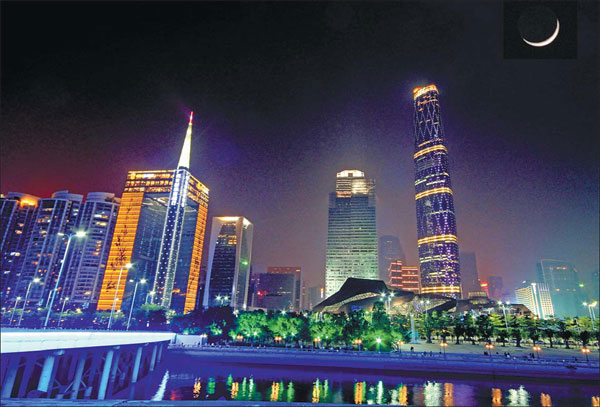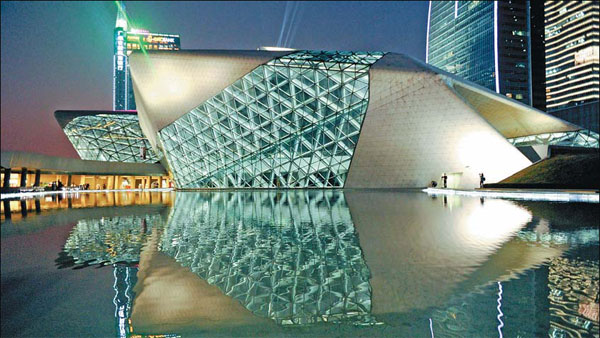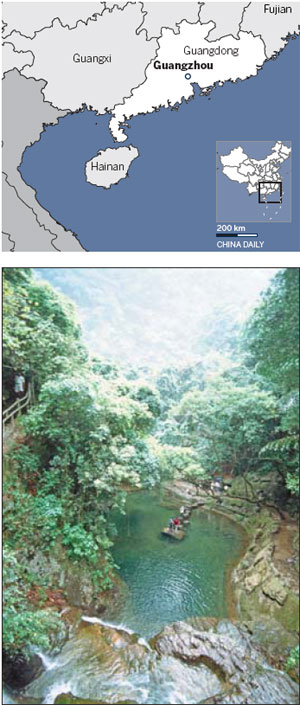Long lost weekend
Updated: 2013-06-27 05:49
By Tang Zhe in Beijing and Xu Jingxi in Guangzhou (China Daily)
|
||||||||
|
Guangzhou's many skyscrapers dazzle with a multicolored lighting show on the banks of the Pearl River. Photos provided to China Daily |
|
The spaceship-like Guangzhou Opera House, designed by Zaha Hadid, is an iconic landmark on Guangzhou's skyline. |
Guangzhou will soon offer many transit passengers a 72-hour visa waiver. Tang Zhe in Beijing and Xu Jingxi in Guangzhou explore the city's delights.
Guangzhou will soon become the third Chinese city to grant transit passengers from 45 countries a 72-hour visa waiver.
With a history of more than 2,200 years, the city has been the cultural and economic center of South China since ancient times.
Historic sights include the Museum of Nanyue King Mausoleum, Sun Yat-sen Memorial Hall and Whampoa Military Academy.
With an area of 14,000 square meters, the Museum of the Nanyue King Mausoleum is the oldest and largest Han Dynasty (206 BC-AD 220) tomb with the most funerary antiquity, as well as elegant architecture.
The inhabitant of the tomb is the second king of Nanyue, Zhao Mo (137-122 BC).
Hidden 20 meters underground, the tomb is made up of 750 huge stones with colorful murals and has more than 1,000 burial artifacts, highlighted by a garment made up of 2,291 pieces of jade displayed on silk - the only of its kind in the world.
Next to the museum is Yuexiu Park, the city's largest park, which is famous for its beautiful scenery and large number of historical relics, such as the Five-Ram Sculpture - the symbol of the city - and the Ming Dynasty (1368-1644) city wall.
It's an ideal place for a relaxing walk. You can also get a good view of the city from Zhenhai Tower, located in the park's highest point.
The five-story tower, built in 1380, now houses the Guangzhou Museum and offers visitors an insight into the city's culture and history.
Just one metro stop away from Yuexiu Park is the Sun Yat-sen Memorial Hall, which was built with funds raised by locals and overseas Chinese in memory of Sun Yat-sen, the nation's democratic forefather.
To train the military elites for revolution, the Whampoa Military Academy was established on the Changzhou Island of Guangzhou in 1924.
The academy was bombarded by Japanese military in 1938. The Guangzhou government restored the site to its former glory in 1996.
Shamian Island, near the Pearl River, is a pleasant spot for a stroll. It was an important port for the city's foreign trade from the Song (960-1279) to the Qing (1644-1911) dynasties.
The territory was divided into two concessions and given to France and the United Kingdom by the Qing government in the 19th century.
The island is now a historical area that serves as a reminder of the colonial European period, with quiet pedestrian avenues flanked by trees and lined with more than 100 historical buildings in various European styles.
Traditional landmarks
In Xiguan, about a 10-minute drive from Shamian, there are many well-preserved traditional buildings.
Besides taking in the grandeur of the traditional mansions, you can also enjoy authentic Cantonese food and see Cantonese opera in Xiguan.
Cantonese cuisine is known for its colors, fragrance, taste and presentation, and is an absolute "must-try" in Guangzhou.
Favorite dishes include steamed shrimp dumplings, crispy durian pastries, steamed barbecued pork-stuffed buns and egg custard tarts.
Small restaurants selling traditional snacks along the streets also surprise with various flavors.
The Lianxiang Teahouse also preserves the tradition of presenting Cantonese opera in the afternoon.
After a taste of Guangzhou's charms from times past in Xiguan, visitors can head to the river to soak in the city's modern vibe and visit the new landmarks.
|
Dinghu Mountain in Zhaoqing is a perfect choice to spend time with nature and escape the summer heat. |
Canton Tower stands gracefully by the Pearl River. The world's highest Ferris wheel on top of the tower enables visitors to take in a bird's-eye view of the city.
Across the river is a giant "sailboat" - Haixinsha, the main venue of the 2010 Guangzhou Asian Games. Nearby is Guangzhou Opera House, a modern spaceship-like building designed by famous Iraqi-British architect Zaha Hadid.
Over the past three years, the area has become the central business district and cultural heart of the city.
Besides the opera house, you can also wonder through Guangdong Museum and Guangzhou New Library. The two buildings boast interesting architecture, with the former looking like a black jewelry box and the latter a white unfolded book.
The exhibits in Guangdong Museum are mainly relics, such as china, jade, bronze ware and ink stones.
If you prefer modern art, you can visit Redtory, known as "Guangzhou's 798 art zone".
The buildings have been transformed into art centers, restaurants and bars. You can tour art exhibitions and shop at the small artisan market.
The Fangsuo Commune in TaiKoo Hui shopping mall is also a great spot for lovers of art and literature.
The commune is a combination of bookshop, cafe, clothing store, exhibition center, artisan boutique and public salon. Artists, writers and scholars are invited to give lectures every week.
At night, take a cruise on the Pearl River. The buildings on both sides compete for your attention with their dazzling neon lights.
With its colorful "dress" on, Canton Tower is most charming at night.
There are three main bar streets along the Pearl River: the one near Haizhu Plaza metro station, another on Shamian Island, and Party Pier Beer Culture and Art Zone. The best way to wrap up a tour of Guangzhou is to sit in the cool breeze, drinking beer, chatting with friends and soaking in the city's nightscape.
Off the beaten track
Compared to the 72-hour visa-free transit policies in Beijing and Shanghai, the visa offered in Guangzhou has the advantage of enabling foreign visitors to leave the provincial capital of Guangdong to explore other cities in the province.
Zhaoqing, a city two-hour drive from Guangzhou, boasts many forest parks. Ding-hu Mountain is the first natural reserve in China to join UNESCO's Man and the Biosphere Program thanks to its abundance of wildlife.
Birdsong and streams liven up the deep and tranquil forests.
Seven Stars Cave is another scenic spot not to be missed.
If you desire more excitement, you can try rafting adventures at Panlong Gorge or Seven Stars Cave.
Besides the natural wonders, visitors will also be captivated by the architecture. The most striking is diaolou, or watchtowers, in Kaiping, a city three-hour bus ride from Guangzhou.
As a World Cultural Heritage site, Kaiping diaolou is an interesting combination of Chinese rural architecture and Western styles, including Greek, Roman and Gothic.
Kung fu fans may wish to make a trip to Foshan, where they can visit the former residence of Ye Wen, a Wing Chun master, and the memorial hall of Huang Feihong, a classic character in Chinese kung fu movies famous for his fast kicks. It is easy to travel to Foshan because it is linked to Guangzhou by subway.
For business people who wish to relax after busy schedules, the hot spring town in Conghua is a good choice.
People can also try digging out a "bathing tube" in the soft sands by the Liuxi River, and a hot spring will appear in the sand hole.
Contact the writers at tangzhe@chinadaily.com.cn and xujingxi@chinadaily.com.cn.
(China Daily USA 06/27/2013 page11)

 Philippine, US start Naval exercise in S China Sea
Philippine, US start Naval exercise in S China Sea
 Supreme Court gay rights ruling celebrated across US
Supreme Court gay rights ruling celebrated across US
 Rudd returns as Australian PM after Gillard
Rudd returns as Australian PM after Gillard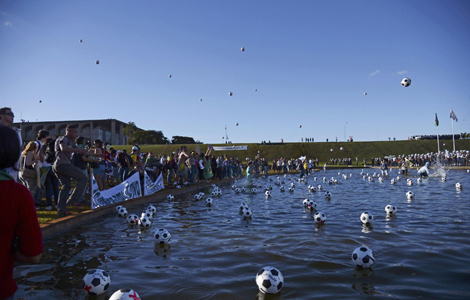
 Brazil protests intensify before Confed Cup semifinal
Brazil protests intensify before Confed Cup semifinal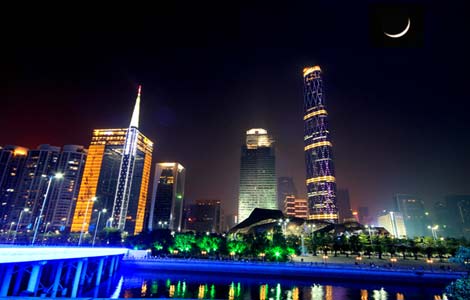
 Long lost weekend
Long lost weekend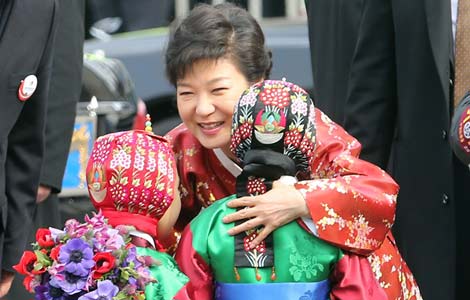
 Park ready to charm China
Park ready to charm China
 Prices climb as police crack down
Prices climb as police crack down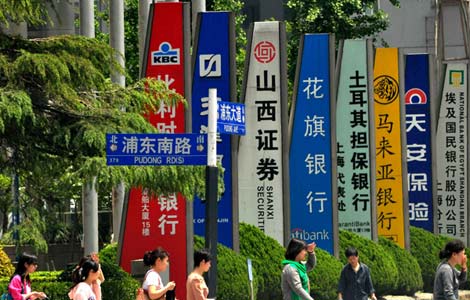
 China 'most promising' in FDI
China 'most promising' in FDI
Most Viewed
Editor's Picks
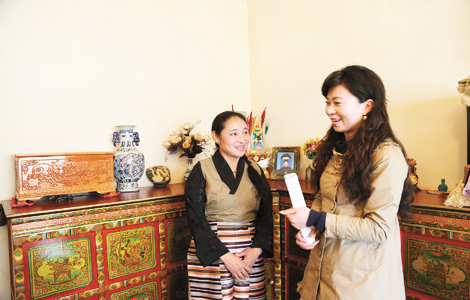
|

|

|
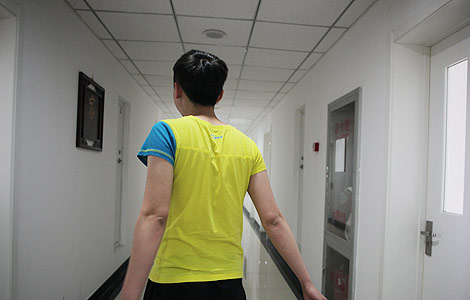
|

|

|
Today's Top News
Promising outlook on US, China investment
IBM to make Chinese job cuts
PBOC ends credit crunch, to go further
Snowden still at Moscow's airport, asylum pending
Mandela still critical, Zuma cancels trip
China slams Japan's new defense white paper
US Treasury Under Secretary to visit China
Door opens on better homes for poor
US Weekly

|

|
